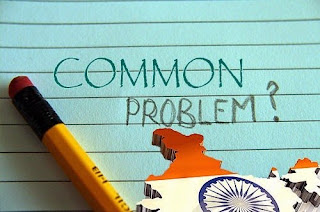India has announced an ambitious plan to expand its nuclear energy program by nearly 15 fold in the next 20 years, from the current 4,500 MW to about 62,000 MW by 2032.
Financing- Nuclear reactors being built today are almost 300% more expensive, than before.
Manufacturing Risks- Presence of foreign materials in parts, defects in steam generator tubing or weld material not meeting specifications, are all examples of things that could go wrong in the process of production.
Nuclear Waste- India does not have a long term waste disposal policy. Although the amount of nuclear waste (often referred to as radio-waste) is relatively small, much of it is highly radioactive and must therefore be carefully managed as hazardous waste or else the scope for damage is enormous.
Not prepared for emergency- Most nuclear power plants are situated near the border between two states. In case of an emergency, there are no relevant preparation plans for the neighbouring state. In case of the need for evacuation, The evacuation plans cover only a 16 km distance, whereas, the effects of radiation do not confine to only this distance.
Lack of public access to details- The public has no access to the details of even the routine releases from nuclear power plants. There is no independent agency in the country which can look into the safety records of the Department of Atomic Energy (DAE). Under the secrecy provisions of the Atomic Energy Act 1962, the Govt refuses to give the public access to critical information.
Conclusion-These nuclear power plant criticalities will become a major issue, if not addressed soon and adequately. The govt must step in forthwith, if it wishes to develop clean, abundant, reliable, and safe energy.
The challenges faced at current nuclear plants and further challenges are:
Manufacturing Risks- Presence of foreign materials in parts, defects in steam generator tubing or weld material not meeting specifications, are all examples of things that could go wrong in the process of production.
Nuclear Waste- India does not have a long term waste disposal policy. Although the amount of nuclear waste (often referred to as radio-waste) is relatively small, much of it is highly radioactive and must therefore be carefully managed as hazardous waste or else the scope for damage is enormous.
Not prepared for emergency- Most nuclear power plants are situated near the border between two states. In case of an emergency, there are no relevant preparation plans for the neighbouring state. In case of the need for evacuation, The evacuation plans cover only a 16 km distance, whereas, the effects of radiation do not confine to only this distance.
Lack of public access to details- The public has no access to the details of even the routine releases from nuclear power plants. There is no independent agency in the country which can look into the safety records of the Department of Atomic Energy (DAE). Under the secrecy provisions of the Atomic Energy Act 1962, the Govt refuses to give the public access to critical information.
Conclusion-These nuclear power plant criticalities will become a major issue, if not addressed soon and adequately. The govt must step in forthwith, if it wishes to develop clean, abundant, reliable, and safe energy.

